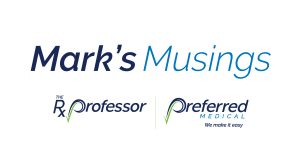
I had the privilege of being on a panel with Lisa Anne Bickford (Director of Government Relations, Coventry) and Don Lipsy (AVP, Managed Care Government Relations, Sedgwick) at the National Workers’ Compensation and Disability virtual conference on October 21. Our session was entitled “Workers’ Comp Regulatory and Legislative Trends that Belong on Your Radar for 2021.” You should be able to watch the recording if you didn’t attend live. Lisa Anne, Don and I became friends (along with many other colleagues) over several years as we worked together on initiatives around the country so our session was as if we were at a restaurant comparing notes after a long day of working with regulators and/or legislators.
Instead of specific bills or regulations, we focused on five key areas that have had major activity in the recent past, the current and into the future: pharmaceuticals, telehealth, BioPsychoSocial treatment model, presumptions and employee classification. Unsurprisingly (if you know us), we all had an opinion on each subject! But here were my high-level thoughts:
Pharmaceuticals: Treatment guidelines – in work comp and with other payers – have evolved on prescription opioids (and other painkillers) since Washington state created their proprietary drug formulary in 2004. Because of that, and other external forces, prescribing patterns have changed (“NSAIDs, often prescribed as non-opioid alternatives to treat pain, surpassed opioids as the top drug group in California workers’ compensation in 2016”). There was a very specific need for drug formularies in work comp. Question: Will more be enacted?
Telehealth: There was progress towards acceptance of telemedicine, by employers and employees, prior to March. However, because of COVID-19, “we saw 10 years of telehealth adoption in about 8 weeks” as the healthcare opportunity increased from $3 billion to $250 billion and regulations from Medicare to work comp were relaxed. There is widespread hope that the momentum continues. Question: What happens next?
BioPsychoSocial treatment model: “Psych” is not nearly as scary to the work comp industry in 2020 as it was in 2010. However, there are geographical and generational differences in adoption by payer, provider and patient so we still aren’t where we need to be in implementing a whole-person approach to recovery. COVID-19 has been a game-changer because the importance of mental health in relation to resilience has become a personal issue for every human being on planet earth. Question: What could stop progress?
Presumptions: The expansion of presumptively compensable work comp claims, originally focused on first responders and now including “essential workers” related to COVID-19, is both an important and emotional discussion. It is difficult to argue that PTSD for police officers or respiratory issues for firefighters are not related to their job duties. However, this creates different standards based on job classification (so there are effectively multiple work comp “systems”) and unfunded liabilities for municipalities with revenue shortfall due to shelter-in-place. Question: Is this sustainable?
Employee classification: The “gig economy” is the preferred choice of income for millions of Americans for the flexibility it provides (often individuals have multiple concurrent “gigs” that they work on their own hours and at their own pace). Government – specifically California with AB5 + AB2257 but other states that are also using the ABC test – is questioning where the line of employment is drawn. This changes the business model of these companies from independent contractors to employees. However you believe these workers should be categorized, there is no denying that the viability of the companies and income for millions of Americans could be negatively impacted. Question: What is the cost of change?
Hopefully the content we provided was helpful to those that attended. But the answers to all of my questions above (and those that Lisa Anne, Don and I discussed in the session) still linger. What does 2021 and the next decade have in store? I’m not even going to tempt the fates in trying to answer that (“the 2020 effect”) but the one thing I do know is that things change fast and staying on top of them is challenging.
Mark Pew, The RxProfessor, Educator and Agitator
